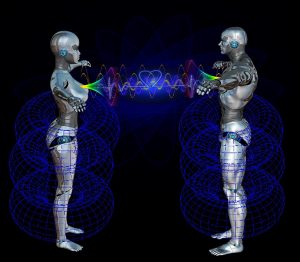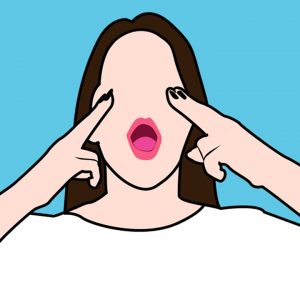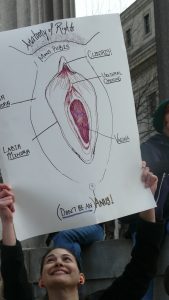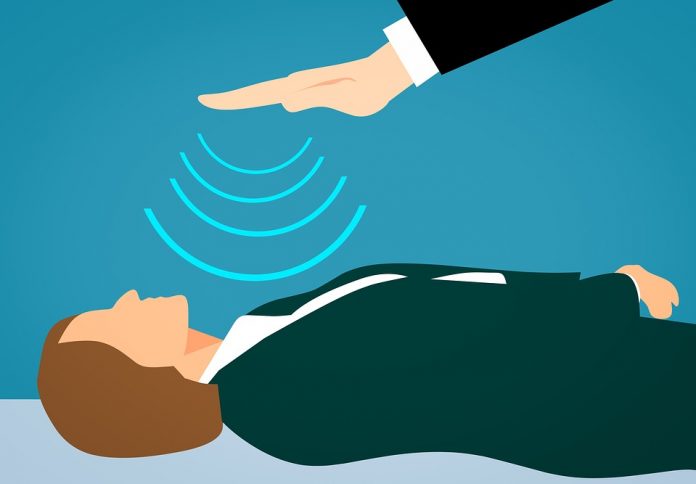The history of the modern vibrator, one of the most popular sex toys on the market, didn’t begin with an interest in delivering pleasure. The first vibrator emerged in the late 1800s, and the tool had designs for almost every kind of stimulation in mind, except for clitoral, according to Well and Good, an editorial advisor in wellness.
For nearly as long as human history, there have always been sex toys—or at least objects that resemble sex toys, says certified sex educator Cindy Luquin, founder of sexual-health education company P2P Consulting.
“Stone dildos and intimate toys have been found from 30,000 years ago,” she says.
Although it can’t be determined for certain that that’s what these tools were used for, their proportions suggest at least an imitation of the penis. And just recently, a phallic wooden object discovered in Rome made countless headlines, including here at StorErotica, because researchers believe that the finding is an ancient dildo.
The vibrator came many centuries later. According to sex researcher Hallie Lieberman, PhD, author of Buzz: The Stimulating History of the Sex Toy, British inventor and physician Dr. Joseph Mortimer Granville patented his electric invention (also known as “Granville’s Hammer”) in the 1880s for medical purposes entirely ignorant its ability to provide the elusive female orgasm.

Dr. Granville believed that healthy nerves had vibrations of their own which required stimulation to prevent disease, so he designed a vibrating stimulator to treat a variety of conditions, including constipation and hearing loss, in both men and women, according to Dr. Lieberman. And because electricity wasn’t common in the home in the late 1800s, early vibrators had to be operated by doctors exclusively.
While Dr. Lieberman has debunked the popular myth of Victorian doctors administering vibrators to cure hysteria in women, she did uncover in her research the otherwise sexist medical practice of physicians inserting vibrators into the vagina to treat “female ailments.” “Female ailments” may have included hysteria, but Lieberman says “using vibrators to treat hysteria prophylactically seems improbable.” Doctors of the time would have understood that bringing a patient to orgasm with clitoral stimulation was unethical, she explains: “Would a reputable doctor have done this stuff and kept their license? No way.”

By the early 20th century, the medical community had debunked the cure-all vibrator as a fraud, according to Dr. Lieberman, so manufacturers turned their sales focus from physicians to consumers, according to Well and Good. Vibrators entered American homes still falsely claiming to be (nearly) panacea, but now to a general home audience.
An advertisement for the Swedish Electric Vibrator Co. in the 1907 Pittsburgh Post-Gazette proclaimed: “Scientists and physicians hail vibratory massage, which cures nine out of every 10 diseases, as the greatest medical discovery ever granted to suffering humanity.”
The list of 39 diseases the vibrator claims in the ad to cure include gout, asthma, vertigo, bronchitis and paralysis.
Perhaps it was this shift from the medical setting to the private home during which consumers first considered the sexual benefits of the vibrator, supposes Dr. Lieberman, though who began experimenting with the idea can’t be known with the historical records available today.
“When vibrators first came out, women couldn’t even vote in this country,” says Lieberman. “Birth control and abortions were illegal. Masturbation was seen as a mental illness. Women were not in control of their bodies. Were they going to be writing about masturbating? Hell, no. All that to say, do I think people were masturbating with them? Yes.”
According to Dr. Carol Queen, Good Vibrations staff sexologist and curator of the Antique Vibrator Museum in San Francisco, over the next few decades, the utilitarian value of a vibrator was rebranded: first, in the 1920s, it was marketed to women as a beauty treatment for wrinkles, and then, by mid-century, advertisers suggested its potential as a scalp or back massager.

“Simultaneously, research was happening in the field of human sexuality that would later inform the vibrator’s use as a device of sexual pleasure,” reports Well and Good.
Sexologist and biologist Dr. Alfred C. Kinsey caused an uproar when he published Sexual Behavior in the Human Male and Sexual Behavior in the Human Female in 1948 and 1953, respectively. His findings, which were some of the first large-scale studies on human sexuality, included the provocative statistic that 62 percent of women masturbated.
“He talked about how common female masturbation was, and people were outraged,” Dr. Lieberman says.
Meanwhile, researchers of sexuality Dr. William H. Masters and Virginia E. Johnson pushed the conversation even farther in their study of the mechanics of the female orgasm.
According to Well and Good, the two scientists observed “participants masturbating in their lab—using a camera-equipped vibrator they dubbed ‘Ulysses.’ With the help of the vibrator, the Masters and Johnson research helped to dispel the notion that women who didn’t climax from vaginal penetration alone were ‘frigid,’ but rather that they likely needed the addition of clitoral stimulation. (Up until that point, the prevailing narrative—fronted by Austrian neurologist and psychologist Sigmund Freud—was that clitoral orgasms were “infantile” and vaginal orgasms were mature and superior.)”
 As the 1960s and ‘70s approached, women’s sexuality became a political concern. Whereas first-wave feminism largely focused on women’s suffrage, second-wave feminism concerned itself with breaking patriarchal strangleholds. Women advocated for greater employment opportunities outside the home and increased reproductive rights, an agenda which involved what were known as consciousness-raising groups.
As the 1960s and ‘70s approached, women’s sexuality became a political concern. Whereas first-wave feminism largely focused on women’s suffrage, second-wave feminism concerned itself with breaking patriarchal strangleholds. Women advocated for greater employment opportunities outside the home and increased reproductive rights, an agenda which involved what were known as consciousness-raising groups.
“Women were getting together to talk about their lives away from men,” Dr. Lieberman says of the ‘60s feminist meetings. “They talked about their sexual experiences and abortion. It was a way to get back their power.”
Betty Dodson, American sex educator, was among those who used the opportunity to educate women on masturbation.
“Dodson reasoned that women couldn’t truly be liberated if they weren’t capable of providing their own orgasms or knowing their bodies well enough to tell a partner how to please them,” says Well and Good.
Famously, educational meetings at Dodson’s apartment were all naked women. Dodson handed mirrors to the attendees to allow them to examine their private parts in an anatomy lesson on the vagina. Then, Dodson demonstrated how to use the Hitachi Magic Wand to orgasm. She then distributed Magic Wands women so that they could try them for themselves
Dodson’s approach supported Masters and Johnson’s value of clitoral stimulation.
According to Well and Good, “In 1973, she took her message of female sexual liberation through masturbation to the National Organization for Women (NOW) convention, where it was met with a mixed reception. (Ironically, Lieberman writes in Buzz, some feminists took issue, believing Dodson’s ‘focus on orgasms and sexual pleasure divorced from emotional connection was a male-identified and antifeminist form of sexuality.’)”
The 1970s also instituted the first female-founded sex shops, including Eve’s Garden in New York and Good Vibrations in San Francisco. Until the sex shops were established, women had to order vibrators either through mail-order catalogs or from male adult bookstores. The new women-owned shops were a safe place for women to ask their questions, although the stores faced push-back from their neighbors, as many still do today.
In the 1990s, a pink traslucent model of vibrator called the Rabbit got the attention of popular TV shows like Sex and the City, promoting the women’s orgasm.
Yet, there is still much to be learned the field of sexual pleasure people with vaginas. It was only in 2005 when the clitoris’ anatomy was fully mapped. Experts believe that further pleasure research could ultimately benefit women’s health overall.

According to Well and Good, “in the first two decades of the 21st century, vibrators have, ironically, come full circle, says Dr. Queen, returning to their original 19th-century purpose as a health device. With a twist, of course: This shift is due, at least in part, to our greater understanding and acceptance of the role sexual wellness plays in our overall health. Whereas sexual health historically focused on STI prevention and treatment, as well as reproductive function, the field has expanded over the years to include the mental and emotional components, too.”
Today, quality vibes with a price that’s right can be found in sex stores, drug stores, on Amazon.
But despite the commonplace of vibrators today, a stigma still prevails. In 2019, Dame co-founder and CEO Alexandra Fine sued New York’s Metropolitan Transit Authority (MTA) for refusing to allow her to advertise vibrators on the subway, while they were accepting ads for erectile dysfunction pills. Dame won the suit, which argued discrimination.
“It’s one of my proudest moments,” Fine says of the settlement, according to Well and Good.
Read the whole Well and Good story here.














You must be logged in to post a comment.